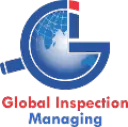Solar energy is becoming an increasingly popular choice for both residential and commercial properties, offering a sustainable and cost-effective alternative to traditional energy sources. To ensure that your solar panels are functioning optimally, regular solar panel inspection is crucial. This guide will walk you through the importance of solar panel inspections, common defects to look out for, a detailed inspection checklist, and the different quality standards for solar panels.
Importance of Solar Panel Inspection
Solar panels are an investment that can yield significant savings on energy bills while contributing to a greener planet. However, like any other technology, they require regular maintenance and inspections to operate efficiently. Routine checks ensure that the panels are functioning at their optimal capacity, which is essential for maximising energy production and achieving the expected financial returns on your investment. Solar panel inspection helps:
- Maintain Efficiency: Ensuring your panels are working at their highest capacity.
- Identify Issues Early: Spotting defects or damages early on can prevent more significant problems and costly repairs.
- Prevent hazards: Regular inspections can help prevent potential electrical hazards.
- Extend lifespan: Proper maintenance and timely repairs can extend the life of your solar panels.
Ignoring regular inspections can lead to reduced energy production and higher repair costs as well as exposure to safety hazards.
Common Solar Panel Defects
Understanding common defects can help you know what to look for during an inspection. Here are some issues you may encounter:
- Micro-cracks: Tiny cracks in the solar cells that can reduce the efficiency of the panels.
- Hot Spots: Areas that overheat due to manufacturing defects or damage, leading to reduced performance and potential safety hazards.
- PID (Potential Induced Degradation): A condition where voltage potential differences cause a drop in power output.
- Delamination: When layers within the solar panel start to separate, affecting performance and durability.
- Loose Connections: Can lead to electrical failures and reduced energy production.
Understanding these common issues can help owners and quality control inspectors keep an eye out for early signs of trouble.
Solar Panel Inspection Checklist
Performing a thorough inspection involves several steps. Here’s a comprehensive solar panel inspection checklist to guide you:
Visual Inspection
- Check for Physical Damage: Look for cracks, chips, or scratches on the panels.
- Inspect Mounting Hardware: Ensure all bolts and brackets are secure and there is no rust or corrosion.
- Examine Wiring and Connections: Check for any loose, frayed, or damaged wires.
Electrical Inspection
- Measure Output Voltage: Use a multimeter to check if the voltage output is within the expected range.
- Test for Grounding: Ensure the system is properly grounded to prevent electrical hazards.
Performance Check
- Monitor Energy Production: Compare the energy production against expected values based on the panel specifications and current weather conditions.
- Check for Shading Issues: Ensure no new obstructions (like growing trees) are casting shadows on the panels.
Advanced Inspection
- Solar Panel Drone Inspection: Use drones equipped with thermal cameras to detect hot spots and other anomalies not visible to the naked eye.
- Initial Production Check: Perform an initial production check to ensure the panels are producing energy as expected right after installation.
- Pre Shipment Inspection: If you are purchasing new panels, a pre-shipment inspection can ensure they meet quality standards before delivery.
Different Quality Standards for Solar Panels
When it comes to solar panels, adhering to quality standards is crucial for ensuring efficiency and safety. Here are some key quality standards to be aware of:
- IEC 61215: This standard specifies the requirements for the design qualification and type approval of terrestrial photovoltaic modules suitable for long-term operation in general open-air climates.
- IEC 61730: This standard relates to the safety qualification of photovoltaic modules.
- ISO 9001: This certification ensures that the manufacturing process meets international quality management standards.
Quality Control Checklist
To ensure your solar panels meet these standards, a quality control checklist during the inspection can be very helpful:
- Verify Certification: Check that the panels have necessary certifications such as IEC 61215 and IEC 61730.
- Inspect Manufacturing Dates: Ensure the panels are within their warranty period and have not been sitting in storage for extended periods.
- Review Product Specifications: Compare the panel specifications with the manufacturer’s datasheet to ensure they match.
- Test Samples: For large installations, it may be useful to test a sample of panels for performance before full deployment.
Solar Panel Inspection Cost
The cost of a solar panel inspection depends on the size of the installation, the methods used and the frequency of inspections. More advanced methods, such as solar panel drone inspection, can be more expensive but offer detailed insights that are often worth the investment.
Larger installations will require more time and resources to inspect. Regular, scheduled inspections can sometimes be more cost-effective in the long run compared to emergency inspections. Basic visual inspections are cheaper than advanced methods involving drones or thermal imaging.
Regular solar panel inspection is essential for maintaining the efficiency, safety, and longevity of your solar energy system. By understanding common defects, following a detailed inspection checklist and adhering to quality standards, you can ensure that your solar panels continue to perform optimally. Investing in routine inspections might incur some costs, but the benefits far outweigh the expenses, ensuring you get the most out of your solar energy system.
By following this guide, you can take proactive steps to maintain your solar panels and enjoy the many benefits of clean, renewable energy for years to come.
